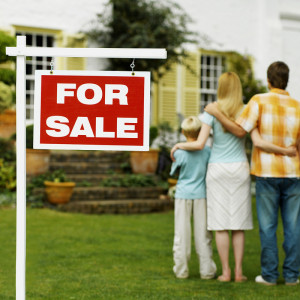The children looked at me in disbelief. Did they hear it right?
“I don’t want to”, said the little one. Selling the house?! Our house? No way.
I have to tell you: it’s not any house.
We built it 10 years ago. Our two oldest children saw the block of land, the design plans, the foundations and the progress as the building was erected. We would go and visit the construction site every day. We would walk in amongst the brickwalls and tell the kids: the kitchen will be here, the living room over there, and near the entrance, this will be mum’s office. Your bedroom is upstairs but you can’t see it now. Too dangerous. There’s no staircase yet, only a ladder.
When we moved in, our youngest ones were 18 months old.
It’s the house of their first memories. In that place, we organized big family reunions, birthday parties, Christmas Eves and a baptism, we went through numerous ramadans. We hosted farewell parties when we left for Australia 3 years ago. At one point, we accommodated 28 people for 3 days.
My favorite part of the house? The fireplace, a beautifully crafted marmor piece. Marmor from Carrara, Italy, the same Michelangelo used for his Pietà.
This is the house of our dreams, the house we intended to get older in, to welcome our grandchildren and to end our life.
Even when we left 3 years ago, I couldn’t imagine we wouldn’t come back. This was not a house. It was a home.
But life is unpredictable.
We took a different path. Our oldest son decided to study in Melbourne, our daughter found an amazing mentor, our youngest ones are heavily involved in sports competitions. We made close friends, we have changed. Our life is now here.
“Why don’t we keep the house?”
The kids still don’t understand.
Children don’t see the practicalities of life: the headache of double taxation, the maintenance of a building at a distance, the financial burden of an unoccupied dwelling.
You know it. We all go through this moment, this day when you need to cut off the link. The link to your old life.
Whether this means selling your house, getting rid of some furniture, giving away your pet, moving abroad forces you to view material possessions and your attachment to things in a different light.
And it’s hard.
Hard to admit that there’s no turning back.
Hard to get rid of the old skin that has become too tight to move freely.
Hard but necessary.
Hard but finally liberating.
For some of us, it has to be quick. The pain is intense but then it’s (kind of) over. Something like ripping off the band aid from a fresh wound. Do you see what I mean?
Once you’ve made a decision to live abroad, you dispose of all your possessions in a few weeks.
For others, it can be a long and agonizing process. You first find solutions to maintain the status quo: keeping the house, putting the furniture in storage.
After a while, you arrange a few things, giving them to family and friends, selling bits and pieces. Little by little.
You’re attached to things for the memories they remind you of.
You’re attached to things for the external sign of social success they represent.
You need to ponder.
You rationalize.
You need time to get accustomed to the idea… that one day eventually you’ll have to… let go.
All of this keeps bringing me back to the illuminating book from Erich Fromm “To have or To be”, a book he wrote 4 years before passing away at the venerable age of 80 years old. A book into which – I like to imagine – he poured all his wisdom.
This is his message for us:
Human beings inherently tend to function according to 2 modes:
1/ The having mode
It’s accumulating goods, acquiring property, earning money. It perspires through the language we use: we’ve got a family, we’ve got a house and we’ve got problems (as if we owned them!).
This mode is prevalent in today’s globalized world culture geared towards consumerism.
It goes as far as to become part of our identity. “I am what I have”.
2/ The being mode
It’s both
* experiencing life – being fully present with all our senses, being active doing, producing, creating
* being genuine and authentic.
Fromm goes on and draws upon biblical references, Jewish traditions, Buddhist practices and Muslim texts to show us that all these teachings bring us toward the being mode. This is according to Fromm, where man is fully human and experiences joy through sharing, giving and loving.
So the ultimate expat question is: to have or to be?
What is going to prevail for you? The attachment to material possessions or the desire to experience new sensations?
Being uprooted forces you to be: you’re thrown into a fully new world. All your senses are in alert, all your references are gone. You can’t function on automatic pilot. What you took for granted is now an exception. You may have lost the ability to speak, read and talk due to the language barrier. You have to be creative. You’ve got new eyes. It’s both stimulating and exhausting but you’re living fully.
The expat life forces you to change your approach to material goods. Would you agree?
Share your story in the comments below.
photo credit pallspera.com via photopin cc and credit music Piano Society
